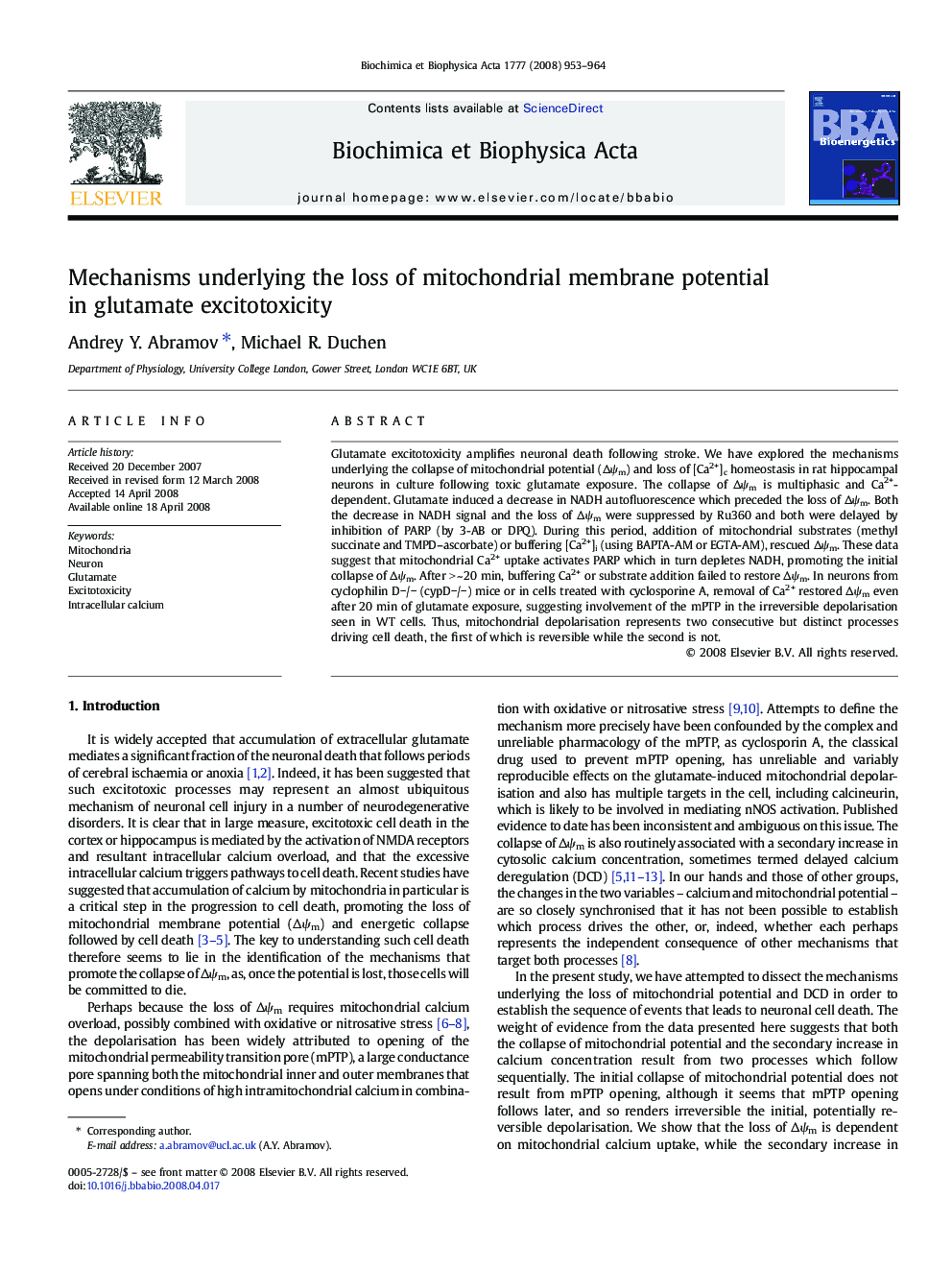| کد مقاله | کد نشریه | سال انتشار | مقاله انگلیسی | نسخه تمام متن |
|---|---|---|---|---|
| 8299215 | 1537052 | 2008 | 12 صفحه PDF | دانلود رایگان |
عنوان انگلیسی مقاله ISI
Mechanisms underlying the loss of mitochondrial membrane potential in glutamate excitotoxicity
دانلود مقاله + سفارش ترجمه
دانلود مقاله ISI انگلیسی
رایگان برای ایرانیان
کلمات کلیدی
موضوعات مرتبط
علوم زیستی و بیوفناوری
علوم کشاورزی و بیولوژیک
دانش گیاه شناسی
پیش نمایش صفحه اول مقاله

چکیده انگلیسی
Glutamate excitotoxicity amplifies neuronal death following stroke. We have explored the mechanisms underlying the collapse of mitochondrial potential (ÎÏm) and loss of [Ca2+]c homeostasis in rat hippocampal neurons in culture following toxic glutamate exposure. The collapse of ÎÏm is multiphasic and Ca2+-dependent. Glutamate induced a decrease in NADH autofluorescence which preceded the loss of ÎÏm. Both the decrease in NADH signal and the loss of ÎÏm were suppressed by Ru360 and both were delayed by inhibition of PARP (by 3-AB or DPQ). During this period, addition of mitochondrial substrates (methyl succinate and TMPD-ascorbate) or buffering [Ca2+]i (using BAPTA-AM or EGTA-AM), rescued ÎÏm. These data suggest that mitochondrial Ca2+ uptake activates PARP which in turn depletes NADH, promoting the initial collapse of ÎÏm. After >Â ~Â 20Â min, buffering Ca2+ or substrate addition failed to restore ÎÏm. In neurons from cyclophilin Dâ/â (cypDâ/â) mice or in cells treated with cyclosporine A, removal of Ca2+ restored ÎÏm even after 20Â min of glutamate exposure, suggesting involvement of the mPTP in the irreversible depolarisation seen in WT cells. Thus, mitochondrial depolarisation represents two consecutive but distinct processes driving cell death, the first of which is reversible while the second is not.
ناشر
Database: Elsevier - ScienceDirect (ساینس دایرکت)
Journal: Biochimica et Biophysica Acta (BBA) - Bioenergetics - Volume 1777, Issues 7â8, JulyâAugust 2008, Pages 953-964
Journal: Biochimica et Biophysica Acta (BBA) - Bioenergetics - Volume 1777, Issues 7â8, JulyâAugust 2008, Pages 953-964
نویسندگان
Andrey Y. Abramov, Michael R. Duchen,